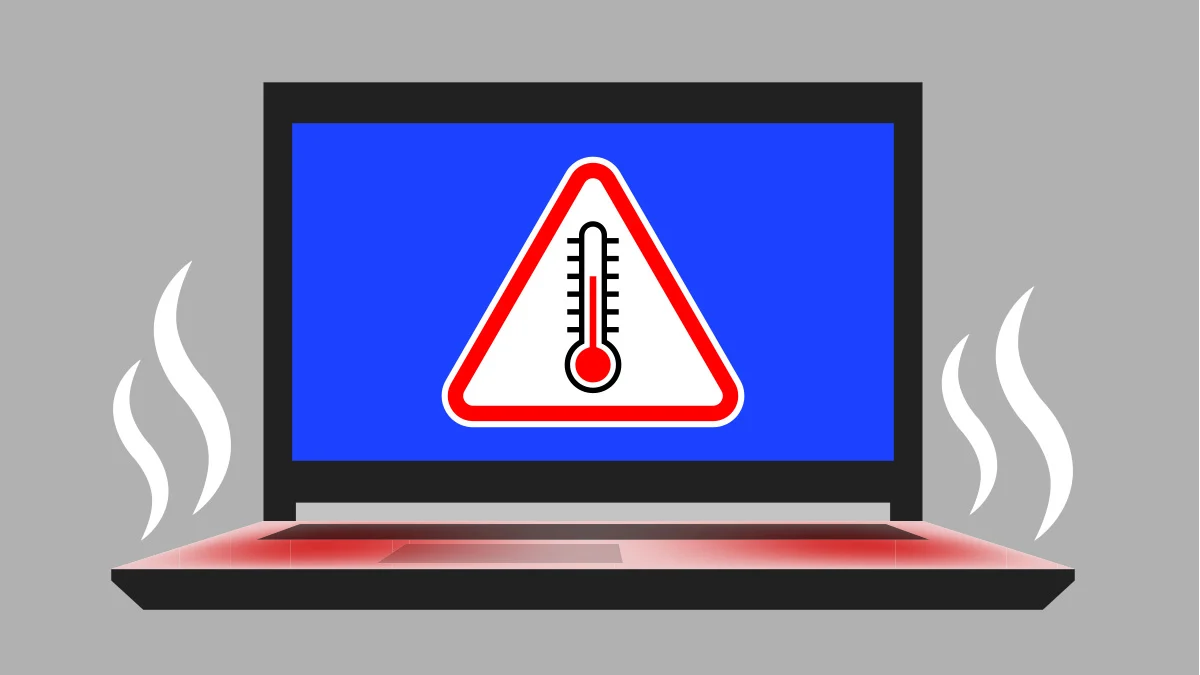Is your laptop or desktop heating up too much? Overheating can slow down performance, crash your system, and even damage internal components. If your device is getting hot while gaming, working, or just browsing, it’s time to fix the issue before it causes permanent damage.
Here’s a complete guide to fixing overheating issues in laptops and desktops in 2025! 🚀
Before fixing overheating issues, let’s understand the common causes:
✔ Dust buildup blocking air vents
✔ Poor ventilation (keeping the laptop on a soft surface like a bed)
✔ High CPU or GPU usage (gaming, video editing, or heavy multitasking)
✔ Old or dried thermal paste (reduces heat transfer from CPU/GPU)
✔ Faulty cooling fans or improper cooling system
✔ Overclocking (pushing CPU/GPU beyond its limit)
Now, let’s go step-by-step to cool down your system and prevent overheating!
Dust blocks airflow and makes your system overheat quickly. Cleaning it can instantly improve cooling.
🔹 Use a can of compressed air to blow out dust from air vents.
🔹 Open the laptop/desktop case and clean the cooling fan with a soft brush.
🔹 If comfortable, remove the fan and clean the heatsink properly.
🛠 Recommended Frequency: Every 3-6 months for best performance.
A cooling pad adds extra airflow to prevent overheating, especially for gaming laptops.
✔ Get a USB-powered cooling pad with built-in fans.
✔ Place the laptop on a hard, flat surface for proper ventilation.
🔥 Best for: Gaming, video editing, and heavy laptop use.
Soft surfaces like beds and pillows block airflow, causing heat buildup.
✔ Always use your laptop on a table or cooling stand.
✔ For desktops, keep the CPU cabinet in an open area (not inside a closed desk).
✔ Ensure proper air circulation around your computer.
🛠 Bonus Tip: Use laptop stand risers to improve airflow underneath.
Thermal paste transfers heat from the CPU/GPU to the heatsink. Over time, it dries out, causing overheating.
✔ Buy a high-quality thermal paste (like Arctic MX-4 or Noctua NT-H1).
✔ Apply a thin layer on the CPU & GPU.
✔ If unsure, take it to a professional technician.
🛠 Best for: Laptops & desktops older than 2-3 years.
High CPU/GPU usage leads to overheating. Reduce unnecessary workload:
✔ Close background apps (Use Task Manager (Windows) or Activity Monitor (Mac)).
✔ Reduce graphics settings in games & software.
✔ Disable unnecessary startup programs for better performance.
✔ Use ThrottleStop or MSI Afterburner to undervolt CPU/GPU (Advanced users).
🔥 Best for: Gamers & professionals using high-end software.
If your fan is too loud or not spinning, it may be damaged.
✔ Check fan speed using software like HWMonitor or SpeedFan.
✔ If the fan is not working properly, replace it with a new one.
✔ Ensure the fan is properly connected inside the laptop/desktop.
🛠 Best for: Old laptops & desktops where fans fail over time.
✔ Update BIOS/Firmware (some updates improve cooling efficiency).
✔ Update graphics drivers (for better power management).
✔ Keep Windows/macOS & software updated.
🔥 Best for: Preventing bugs that cause excessive heat.
If your fans aren’t running fast enough, control them manually.
✔ Windows: Use SpeedFan or MSI Afterburner.
✔ Mac: Use Macs Fan Control to manually adjust fan speed.
🛠 Best for: Customizing fan speed based on temperature.
✔ Use your laptop/PC in a cool room with proper airflow.
✔ Avoid direct sunlight or heat sources like radiators.
✔ If possible, use an air-conditioned or well-ventilated space.
🔥 Best for: Summer seasons or hot climates.
Overclocking boosts CPU/GPU speed but increases heat output.
✔ Disable overclocking in BIOS if overheating occurs.
✔ Change Power Plan to Balanced Mode instead of High Performance.
🔥 Best for: Laptops/desktops running too hot under load.
💡 Try these quick fixes first:
✅ Clean air vents & fans (Most common fix)
✅ Use a cooling pad & laptop stand
✅ Reduce background apps & heavy software
✅ Apply new thermal paste (if old laptop/PC)
💡 For long-term performance:
✔ Keep your system updated & optimize settings
✔ Monitor fan speed & CPU/GPU temperature
✔ Use cooling software or replace faulty fans
By following these steps, you can prevent overheating, improve performance, and extend the life of your laptop or desktop. 🚀🔥
📢 Which method worked best for you? Let us know in the comments! 😊
